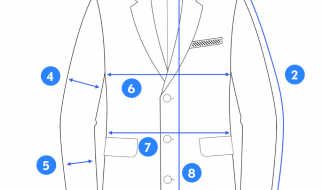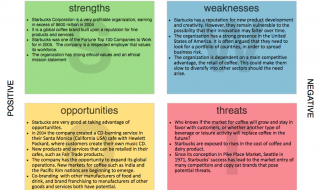I use Meditation like an exercise routine where the muscle I am trying to develop is my focus. I sit down cross legged and hold my focus onto one thing, repeatedly lifting it back to my goal every time I slip into distraction.
I am like a bodybuilder doing biceps curls.
I practice this way because it?s said that a powerful focus is the only thing you need to evolve the mind. I am fascinated by this idea, and I am not the first.
Many people throughout history have searched for ways to evolve the mind. The practitioners of activities like education, drug taking, yoga, puzzles, and philosophy all hope on some level that these activities will work.
In this article we are going to look at a meditation technique called Active Imagination that uses dreams and focused meditation to evolve the mind, and we are going to look at the psychologist who pioneered it ? Carl Jung.
Who Was Carl Jung?
Carl Jung was a psychologist who worked in mad houses at the turn of the 20th century studying the minds of men and women who suffered from mental disorders. He spent his early career trying to figure out was it possible to cure these people.
Around the start of WWI Jung himself began to have repeated visions of Europe being destroyed by a sea of blood. As visions like these became more and more frequent, he soon realized he was descending into the same type of madness which was plaguing the people that he was trying to heal.
After he overcame the initial shock Jung began to understand the he had been gifted an opportunity: If he could figure out a way to heal himself of madness then he could figure out a way to heal others.
This gave him the great courage and hope he would need the battle against his mind for the right to his own soul, and it was during this inner war that he developed Active Imagination.
Why Does Active Imagination Work?
Psychologists believe that the mind is divided into two parts: the conscious and the unconscious. The conscious part of our minds is that small bubble of attention that feels awake and aware of what we are doing right this moment, which in your case is reading these words. This ?focus point? of awareness is called the ego.
The unconscious part of our minds is a much larger field of awareness that deals with all the other background processes and sensations, like keeping our hearts beating and storing our memories. These things are unconscious because they would be a distraction to our egos from concentrating on the present moment.
Active Imagination works by encouraging the conscious and unconscious mind to communicate through making our conscious attention explore down into the unconscious mind. ?No tree, it is said, can grow to heaven unless its roots reach down to hell.? ? Carl Jung
It does this by focusing our conscious minds on the expressions of our unconscious minds ? our dreams.
How To Do Active Imagination
The method Jung taught is simple, all we do is choose one of our most recent dreams to analyse, grab a pen and paper, find a nice place to sit down and meditate, and follow these steps:
Step One ? Find Focus
When we start meditating our minds are usually very active and jumpy, so our first port of call is to calm the mind and get a hold of our stream of attention. This is where all those hours of mind training come into use as you can deploy that big strong focus muscle.
As the mind relaxes we become aware of our little pocket of attention that is there ?witnessing? all our rushing thoughts. This is our conscious mind, and it is the tool which we will use for our next step.
Step Two ? Focus On The Dream
When the mind has calmed and we feel we are present, we move our attention onto an image from the recent dream we have chosen.
The trick here is to keep our attention held to the dream for a long time. We may slip into thinking about grocery shopping or Mike from work, but when that happens we calmly just bring our attention back to the dream image.
Step Three ? Allow The Unconscious To Speak
When we focus on the dream image we are peering into the unconscious mind. To ?get the message? that the unconscious is trying to communicate to us through our dream we need to start allowing the unconscious to speak through the image.
To do this we need to loosen our focus just enough so that the unconscious can start to animate the dream image, but we need to be careful not to loosen our focus too much or we may get absorbed and find ourselves thinking about Mike again.
This is the crucial step, as we allow our unconscious mind to speak we may enter back into the narrative of the dream, or we may end up speaking to one of the dream characters. Sometimes it may even be dark or weird, especially if we?re using this to understand nightmares, but this is alright, it?s just something we might have avoided facing in the past. This is a good place to face our fears and accept our aspirations.
?There is no coming to consciousness without pain. People will do anything, no matter how absurd, in order to avoid facing their own Soul. One does not become enlightened by imagining figures of light, but by making the darkness conscious.? ? Carl Jung
Whatever the form this ?manifestion? takes engage with it and try to remember it as vividly as possible, because in our next step we are going to bring it to life.
Step Four ? Create An Artifact
Now we must channel your inner Picasso or James Joyce by taking that piece of paper in front of us and writing, drawing, or painting whatever we just experienced in the silence of our mind.
The goal here is not to get caught up on trying to make a masterpiece, but merely to make that unconscious image into an artifact which we can try decipher in our next step. If it comes out like a shit in a mug then so be it!
This step shows the hidden bonus Active Imagination has in store for anyone suffering from writer?s block, it is a way to tap into an insane amount of creative potential. It also teaches the crucial lesson of creating first ? then criticizing.
Step Five ? Become An Analyst
Now we take a break. We may go make a tea. We may call Mike to see what he?s up to. We take our minds out of the imagination and back into normal consciousness.
When we?re ready and grounded we turn to our inner art critic, aka our intellects, and we see can we find the message contained within the piece of artwork we just made.
Take Action: Try It Out For Yourself
Try the technique out a few times, and when you get comfortable experiment with various alterations such as:
- Focusing on a dream feeling instead of a dream image
- Create using pottery, clay or a random medium instead of paper
- Interact verbally with the characters and give them accents
That being said, always keep the principal the same: allow the unconscious to manifest into consciousness and then try integrate its lessons.
As Jung himself said: ?Until you make the unconscious conscious, it will direct your life and you will call it fate.?

